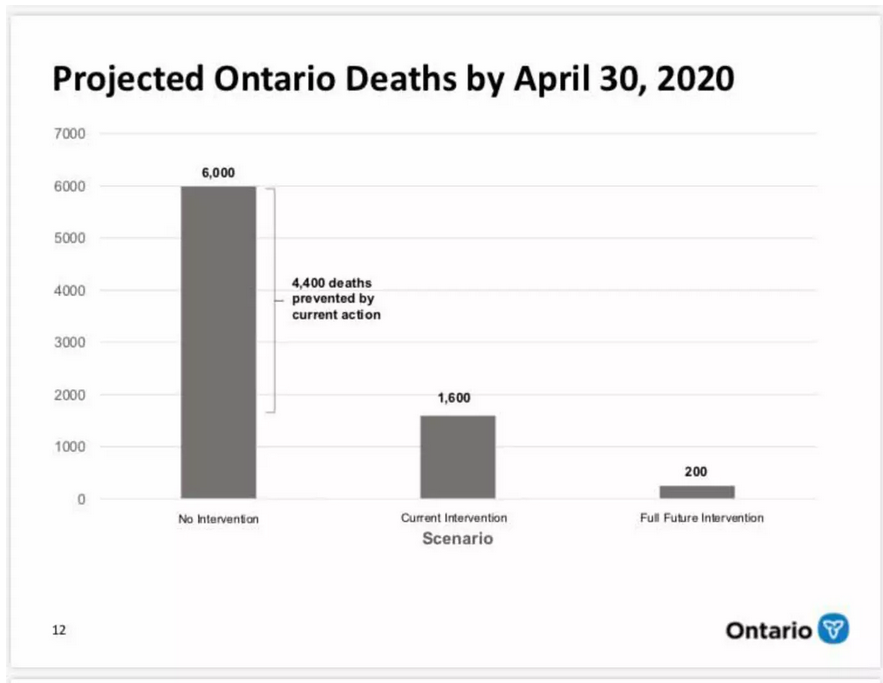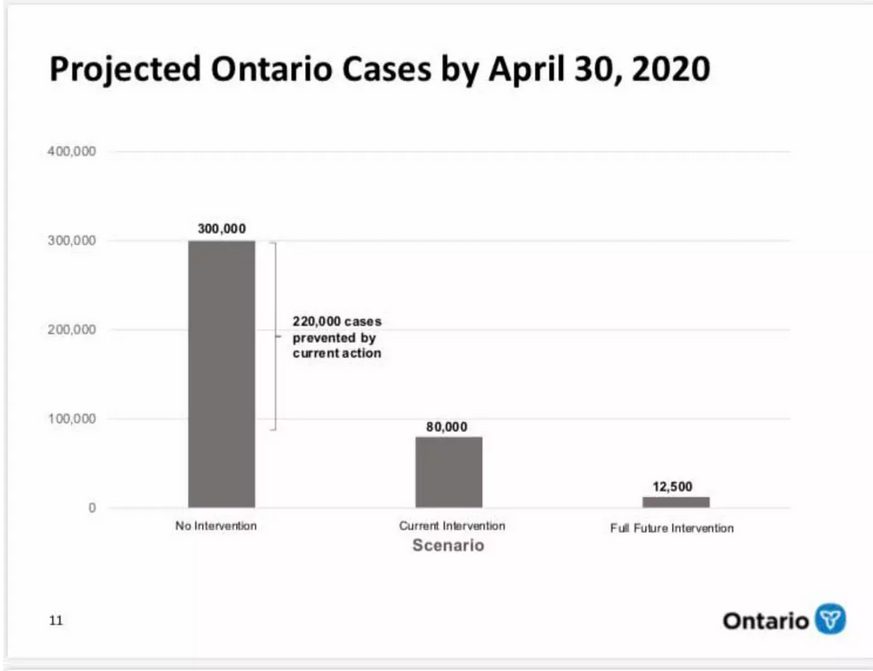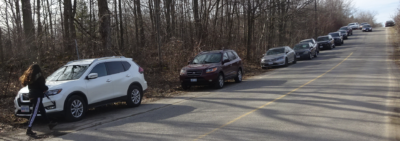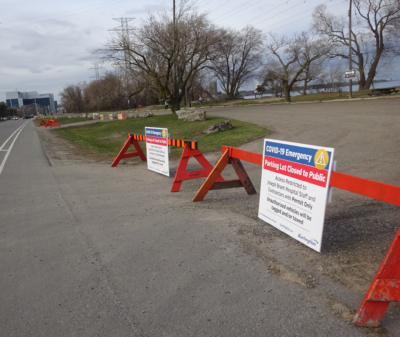 By Pepper Parr
By Pepper Parr
April 4, 2020
BURLINGTON, ON
Getting people to fully understand what we are up against with the COVID19 crisis.
During a media event yesterday – Friday, three doctors made it very clear that 3000 to 15,000 people will die. They left the impression this level of loss was inescapable.
They will be people with compromised immune systems. Each year something in the order of 1300 people die during the annual flu season.
The downside is horrific.
The medical community warns that the surge of infections has yet to arrive in full force. That surge can’t be stopped. The infections that are going to show up in the days and weeks ahead were either brought into the country or passed from one person to the other a week to two weeks ago.
People have yet to see the number of deaths rise – we are seeing the number of infections reported increase. Some of those infected people will die; they are most likely to be people in the 70 and 80 year age range.


This year the medical community is dealing with a flu that has never been seen before and for which there is not yet a vaccine.
Those are the hard on the ground facts.
People are told to stay inside – something many are having difficulty doing.

These cars were parked outside Rattlesnake Point Conservation Halton Area that had been officially closed earlier in the week.
We seem then in public parks where they have been gathering in groups. So the cities are closing the public parks.
People want to get outside for some exercise and fresh air – and are frustrated by all the negative news and rules they aren’t certain make a heck of a lot of sense.
The Beachway has always been a popular place for people to walk; to spend time on the beach in warmer weather.

Not a single car parked – barricades in place
Earlier in the week the parking lots in the Beachway were packed – not the case now – except for one lot at the west end everything is blocked.
So what do you do to get out for some fresh air and exercise?

West end lot was left open. For who?
You are going to have to be creative and find spaces that are not crowded.
This is a situation we are going to be in for the balance of April for certain.
Any lifting of the limits on what we can do and where we can do it will be determined by the number of infection reports we get.
Dr. Donnelly, one of the three presenters at the media event on Friday, made the point:
The solution to the crisis is in our hands – our behaviour will determine just how quickly we can get the worst of this behind us.
Salt with Pepper is the musings, reflections and opinions of the publisher of the Burlington Gazette, an online newspaper that was formed in 2010 and is a member of the National Newsmedia Council.



















I live near La Salle Park and that is the usual neighborhood destination for a walk.
Usually this place has many cars, and people with kids all over and not always distancing.
The city closed the parking lots this weekend – so today at about 3 pm there were no cars, and we walked the entire perimeter and saw less than 10 people. Only one lady with a kid did not distance and she laughed when I indicated this.
We exited at Belhaven and saw one car with young folks parking and entering there. It was the only car parked on this short stem to the Bay.
Closing parking, and the playgrounds, has done a lot to reduce people substantially. Some still walk but these are few and there is lots of room.
Today, families on bikes on the streets were the worst.
It’s working here today at 3 pm.
Excellent post, Tom! Your observation about widespread testing is clearly spot on—countries like South Korea have controlled spread through testing and rigorous follow-up on spread when infected individuals are identified. Certainly the new 5-minute test developed by Abbot Labs in the USA gives us some hope that we might be able to pursue this strategy in time to blunt a second wave. For now–given the complacency at the onset of the first cases in Canada, social distancing is all we have.
I can’t comment for the crowded downtown, but it seems people are doing pretty well out here in the burbs. Distancing is being respected on the streets and in stores. You have to watch out for joggers – they tend to be self-absorbed and following a straight line to pass close to you, huffing and puffing. A few teenagers need a whack upside the head, but so far, so good.
Pretty much to the point Pepper – thanks.
Now people have to learn we have a stealth and lethal killer in our midst and that it gains its force from us mixing and being in proximity to one another. If we don’t mix and mingle it cannot infect others and then be transmitted in a chain all around.
It is estimated that every infected person infects 2 or 3 more, and so this process creates the exponential growth we have seen across countries, states, and cities. Any successful intervention must reduce this number of secondary transmissions.
Current broad-scale social distancing interventions aim to bring this number down by decreasing the number of contacts between people across the population. If people do not encounter each other, they cannot spread infection, regardless of whether they are infected or not.
Unfortunately, broad-scale social distancing is a blunt intervention with massive societal and economic costs. If we can move toward interventions targeted at infected and exposed individuals we can achieve the same outcomes with less societal hardship.
We will be living with this virus for a long time and the only way restrictions on our lives will relax is when the new case counts go to zero, and the curve flattens.
To do this, we will need to massively increase our testing capacity and with tracing and followup.
Pretty much every case and identified COVID virus genome everywhere in the world can be traced back to virus relatives in single sparks originating in Wuhan. These were exported all over the world by transportation and travelers, and then transmitted by human mixing and close mingling in the importing target areas from one place and country to another, and return.
Travelers then went home and after a while these infection sources were dissipated into community spread. That’s largely where we are now, waiting for the last 2 or 3 weeks of spread to show itself.
So far this has taken only 3 months and a bit to spread everywhere on earth.
Follow the rules and take care.